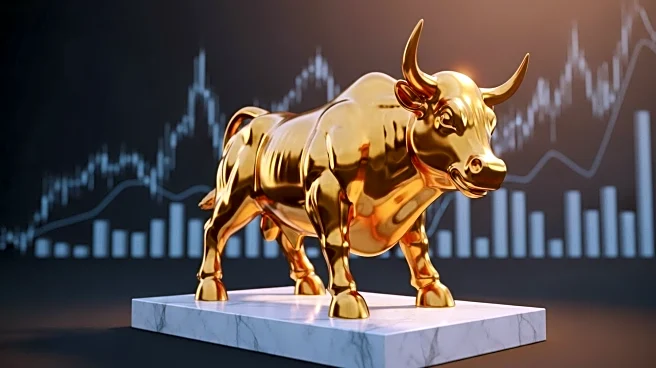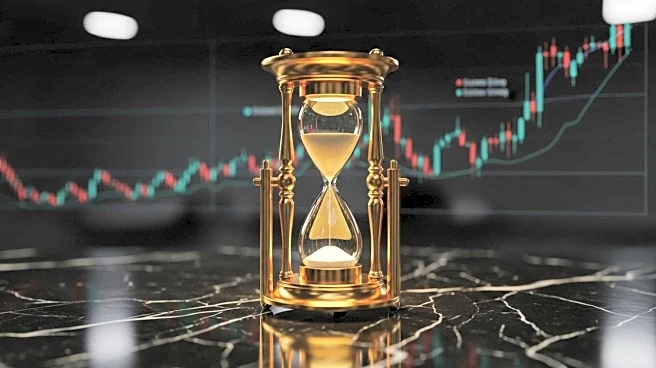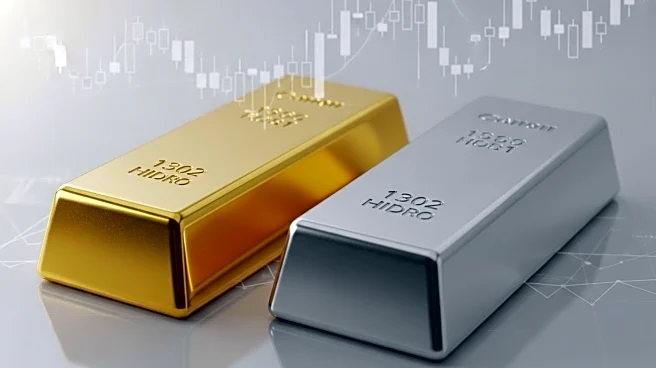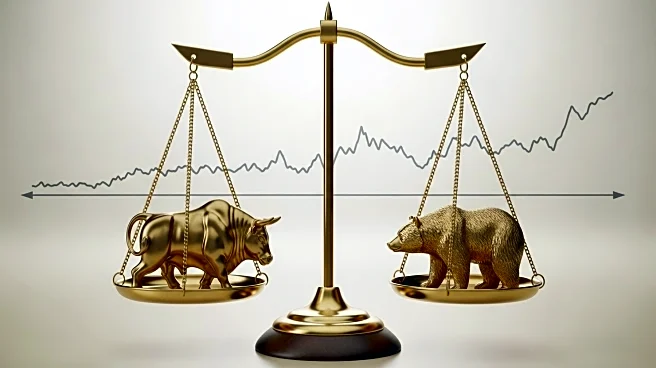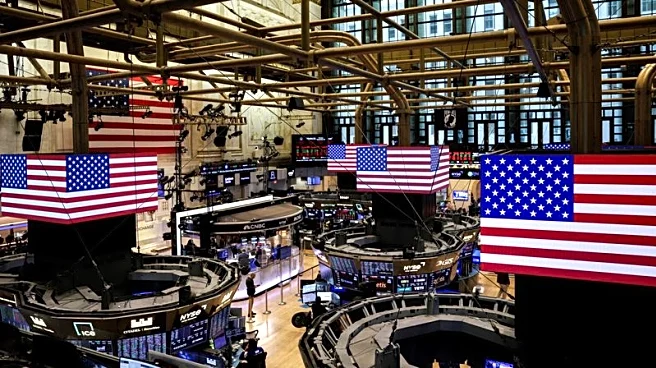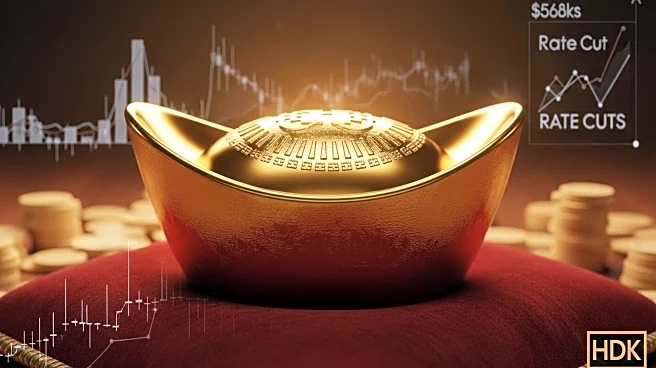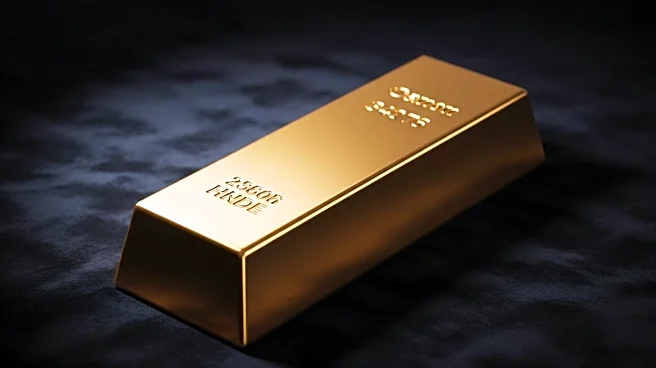What is the story about?
What's Happening?
Gold prices have surged to an all-time high, driven by ongoing economic uncertainties and expectations of Federal Reserve interest rate cuts. The impasse between the two houses of the U.S. Congress, which has resulted in a government shutdown, is contributing to the market's volatility. Spot gold increased by 0.1% to $3,965.39 per ounce, reaching a peak of $3,977.19 earlier in the session. U.S. gold futures for December delivery also rose by 0.3% to $3,988.10. The likelihood of interest rate cuts in October and December remains high, with market probabilities at 95% and 83%, respectively. This environment is favorable for non-yielding gold, which benefits from low interest rates and economic uncertainty. Additionally, Goldman Sachs has revised its December 2026 gold price forecast to $4,900 per ounce, citing strong ETF inflows and central bank purchases.
Why It's Important?
The rise in gold prices reflects broader economic concerns, including the unresolved U.S. government shutdown and potential Federal Reserve policy changes. As a traditional safe-haven asset, gold's increasing value indicates investor anxiety over economic stability and geopolitical tensions. The situation impacts various stakeholders, including investors seeking to hedge against market volatility and central banks adjusting their reserves. The potential interest rate cuts by the Federal Reserve could further influence the U.S. economy by affecting borrowing costs and consumer spending. The ongoing congressional deadlock adds to the uncertainty, potentially affecting government operations and economic confidence.
What's Next?
The market will closely monitor developments in the U.S. Congress regarding the government shutdown and any resolutions that may emerge. Additionally, the Federal Reserve's upcoming decisions on interest rates will be pivotal in shaping economic forecasts and investor strategies. Stakeholders, including financial institutions and policymakers, will need to navigate these uncertainties, balancing inflation concerns with economic growth objectives. The trajectory of gold prices will likely continue to reflect these broader economic dynamics, with potential implications for global financial markets.
Beyond the Headlines
The current economic climate underscores the complex interplay between fiscal policy, monetary policy, and market sentiment. The reliance on gold as a hedge against uncertainty highlights the challenges faced by investors in a volatile environment. The situation also raises questions about the long-term sustainability of current economic policies and the potential need for structural reforms to address underlying vulnerabilities. As central banks and investors adjust their strategies, the broader implications for global economic stability and growth remain a critical area of focus.
AI Generated Content
Do you find this article useful?


